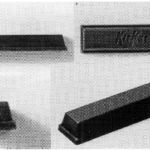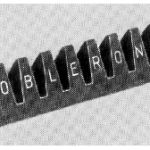It's that time of year again - whether you're sneaking pieces from a child's stash, or waiting to score some discounted leftovers off of the shelves once the big night has passed, Halloween promises a wealth of treats for candy lovers everywhere.
We all have our top treats that we could spot from a mile away based on their wrappers or logos alone. But do you think you could identify your candy or chocolate of choice just by its shape? How about its taste or smell? When you reach into that candy bag on Halloween night, do you know which candy you are grabbing before you read the label just by the feel of it? This blog post is inspired by Halloween candy and uses tasty treats to offer insights into trademark rights.
As of June 2019, the definition of a registrable trademark in Canada expanded to include various distinguishing features, known as non-traditional marks. Non-traditional marks include three-dimensional shapes, modes of packaging goods, sounds, scents, tastes, textures, holograms, moving images, and the positioning of signs. Since mid-2019, over 1000 Canadian trademark applications have been filed in the non-traditional categories.
With this new platform for intellectual property rights in Canada, some popular chocolate and candy brands not only have traditional trademark rights but now also have non-traditional trademarks, including the following:
| Nestlé's KIT KAT WAFER
DESIGN
(Reg. No. TMA601833)
|
| Toblerone's TREAD DESIGN
(Reg. No. TMA164635)
|
| Ferrero's 3D BOX DESIGN
(Reg. No. TMA1106725)
|
| Topps' Ring Pop
(Reg. No. TMA1082826)
|
| Tootsie Roll's LOLLIPOP
DESIGN
(Reg. No. TMA381926)
|
Seeing these shapes not only makes you hungry, but also readily conjures up association with the source of the brand. Canada's ever-growing body of non-traditional trademark filings signals that brands are increasingly 'enchanted' by the value and potential of these types of marks. Brand owners recognize that playing off of all of our senses heightens our association with their product. Indeed, these trademarks are a great way to optimize a trademark portfolio and extend a brand to capture and protect other key source indicators in a company's IP repertoire.
The 'scary' part of obtaining such marks is still playing out before the Canadian Intellectual Property Office (CIPO). In particular:
- Under the revised Canadian Trademarks Act, an applicant for a non-traditional mark must anticipate needing to submit evidence to demonstrate that the trademark is distinctive at the date of filing in order for the mark to achieve registration. The 'mystery' of just how far trademark owners have to go to meet the burden, and what is enough to satisfy CIPO's Examiners, isn't 'hocus pocus' but still appears to be a case-by-case determination. That said, achieving the necessary level of ubiquity required for a non-traditional mark's registration appears somewhat 'frightful'. Don't be 'haunted' by the challenge. The 'trick' is for brand owners to build up extensive evidence over several years prior to filing to improve the likelihood of success with trademark registration.
Trademark owners and lawyers alike need only look to other jurisdictions to understand the 'ghastly' and bitter trademark battles that popular confectionary companies have faced in seeking to secure their non-traditional rights. Read more about Cadbury, Nestlé, and Lindt's overseas efforts in another of our recent blog posts, here.
- An applicant cannot trademark features that serve primarily a utilitarian function. For that reason, it's unclear whether trademark applications for taste marks are attainable for goods and services relating to food and beverages. As of the date of publication, the Canadian Trademarks Register holds no active examples.
It will be 'sweet' to follow the scope of protection provided to non-traditional trademarks and how their enforcement will unfold in the future in Canada. Our projection is that more and more such marks will 'creep' up. Non-traditional marks add 'magic' to any trademark portfolio.
Intellectual property owners with questions regarding non-traditional trademarks and their place in your broader portfolio should contact your professional advisors.
About Norton Rose Fulbright Canada LLP
Norton Rose Fulbright is a global law firm. We provide the world's preeminent corporations and financial institutions with a full business law service. We have 3800 lawyers and other legal staff based in more than 50 cities across Europe, the United States, Canada, Latin America, Asia, Australia, Africa, the Middle East and Central Asia.
Recognized for our industry focus, we are strong across all the key industry sectors: financial institutions; energy; infrastructure, mining and commodities; transport; technology and innovation; and life sciences and healthcare.
Wherever we are, we operate in accordance with our global business principles of quality, unity and integrity. We aim to provide the highest possible standard of legal service in each of our offices and to maintain that level of quality at every point of contact.
For more information about Norton Rose Fulbright, see nortonrosefulbright.com/legal-notices.
Law around the world
nortonrosefulbright.com
The content of this article is intended to provide a general guide to the subject matter. Specialist advice should be sought about your specific circumstances.






